


[Esp]
¡Hola gente bonita!
Estoy retomando los bordados con mostacillas, era una actividad que disfrutaba mucho hacer con mi madre, generalmente bordábamos cuadros o piezas artísticas que luego ella vendía, aun recuerdo cuando la ayudé a bordar un paisaje navideño que quedó muy hermoso.
Nunca había hecho algo así antes, es como bordar o tejer, ni sé como describirlo pero hacer una pieza, una forma con mostacillas es otro nivel, recuerdo a mi tía que tejía literalmente con mostacillas y hacia collares y zarcillos hermosos en los años 90's estaba muy de moda.
Esta actividad puede ser muy relajante, induce la calma, la paz, facilita la concentración y la atención.
Por supuesto tuve un par de accidentes con respecto a mis temblores, pero lejos de enfadarme o frustrarme me eché a reír, porque cuando tomé una mostacilla me dio un temblor fuerte e hice un desastre en el suelo con un montón de cositas regadas por todas partes (es un dolor de cabeza recogerlas) las recogí con mucha paciencia y ¿Qué creen? A los minutos me volvió a suceder y me volví a reír, fue demasiado ridículo, bueno es parte de esto, los movimientos involuntarios.
Disfruté mucho de la actividad era la idea, me sirvió de práctica también, puedo recomendar usar los materiales adecuados para ello como por ejemplo hilo de nylon, alambre de bisutería, trabajarían más cómodos y el producto final se vería mejor presentado. Es mi primera vez, me animé mucho, la próxima vez que vaya a la tienda compraré más mostacillas y el alambre para seguir inventando.
! [English version]
Hello beautiful people!
I'm taking up again embroidery with beads, it was an activity that I really enjoyed doing with my mother, we usually embroidered pictures or artistic pieces that she would sell, I still remember when I helped her embroider a Christmas landscape that was very beautiful.
I had never done anything like this before, it's like embroidery or knitting, I don't even know how to describe it but making a piece, a shape with beads is another level, I remember my aunt who literally knitted with beads and made beautiful necklaces and tendrils in the 90's it was very fashionable.
This activity can be very relaxing, it induces calm, peace, facilitates concentration and attention.
Of course I had a couple of accidents regarding my tremors, but far from getting angry or frustrated I burst out laughing, because when I took a mustard I got a strong tremor and made a mess on the floor with a bunch of little things scattered everywhere (it's a pain in the ass to pick them up) I picked them up with a lot of patience and what do you think? A few minutes later it happened again and I laughed again, it was too ridiculous, well that's part of it, involuntary movements.
I really enjoyed the activity, it was the idea, it served me as practice too, I can recommend to use the right materials for it, for example nylon thread, jewelry wire, they would work more comfortable and the final product would look better presented. It's my first time, I was very encouraged, the next time I go to the store I will buy more beads and wire to continue inventing.

Materiales / Materials

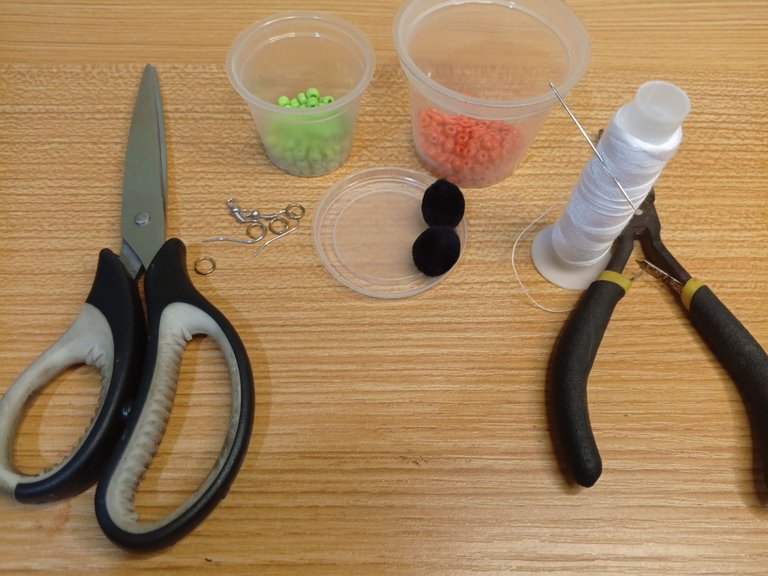
| Spanish | English | |
| Mostacilla verde y naranja | Green and orange mustard | |
| Aros de cadena | Chain rings | |
| Tijera, pinza | Scissors, clamp | |
| Gancho de metal para arete de bricolaje | DIY metal earring hooks | |
| Hilo de coser, aguja de coser a mano | Sewing thread, hand sewing needle | |
| Dos borlas de peluche pequeñas | Two small teddy tassels |


Paso a paso / Step by Step


Step 1️⃣/ Paso 1️⃣
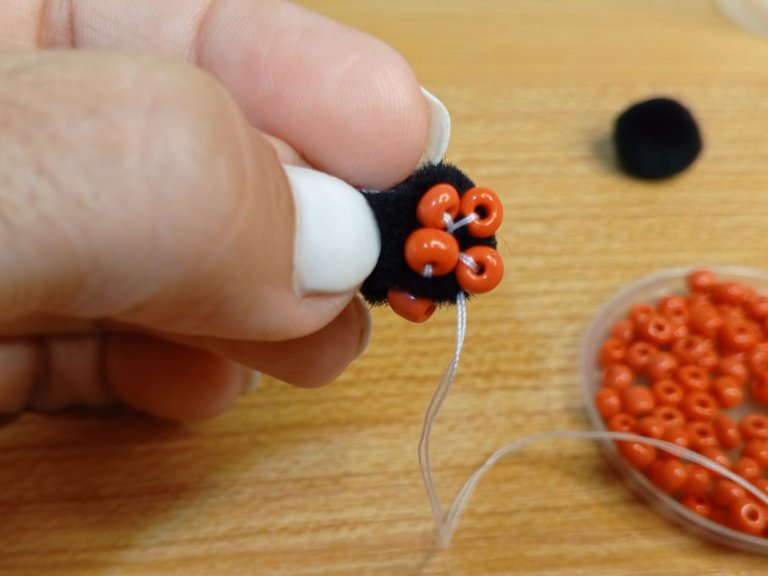 | 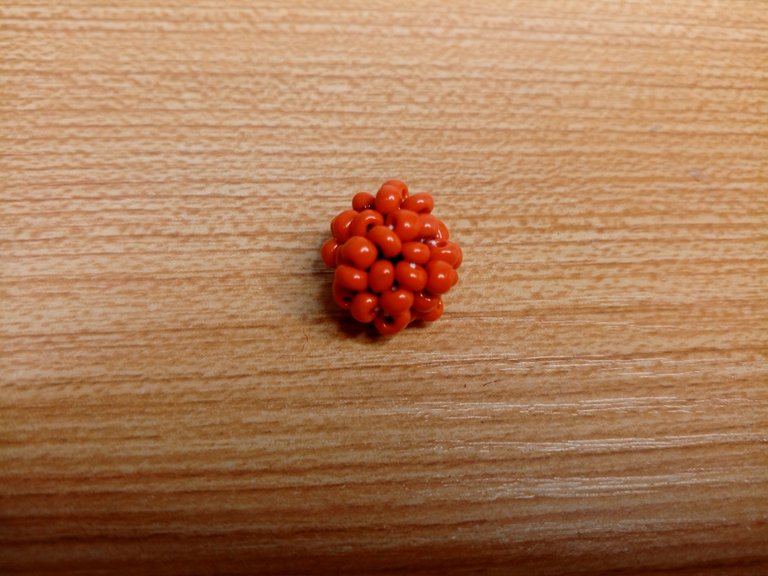 | |
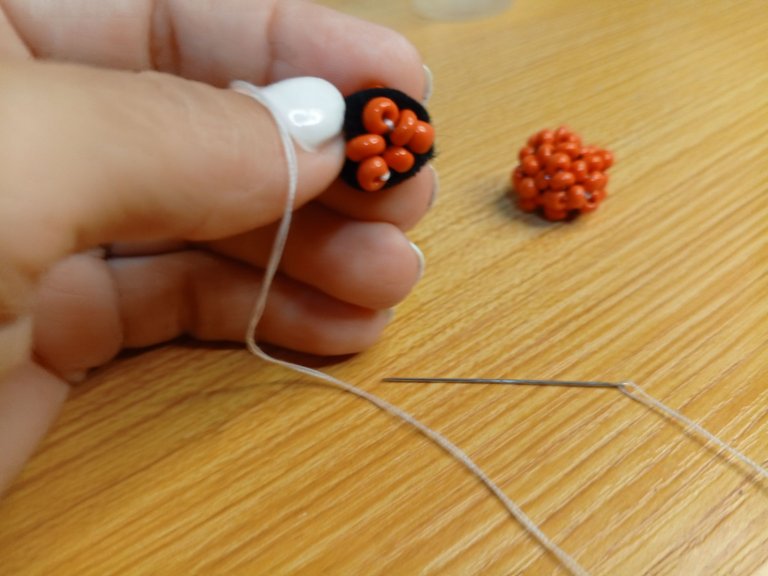 | 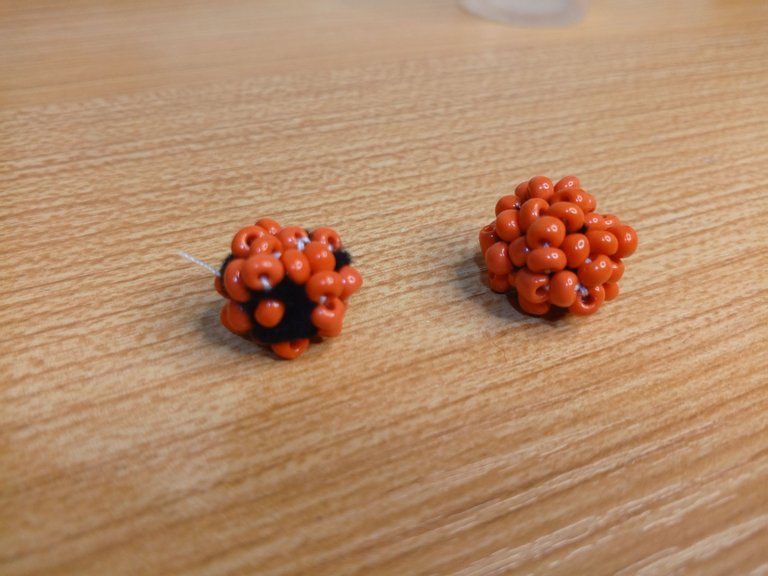 |
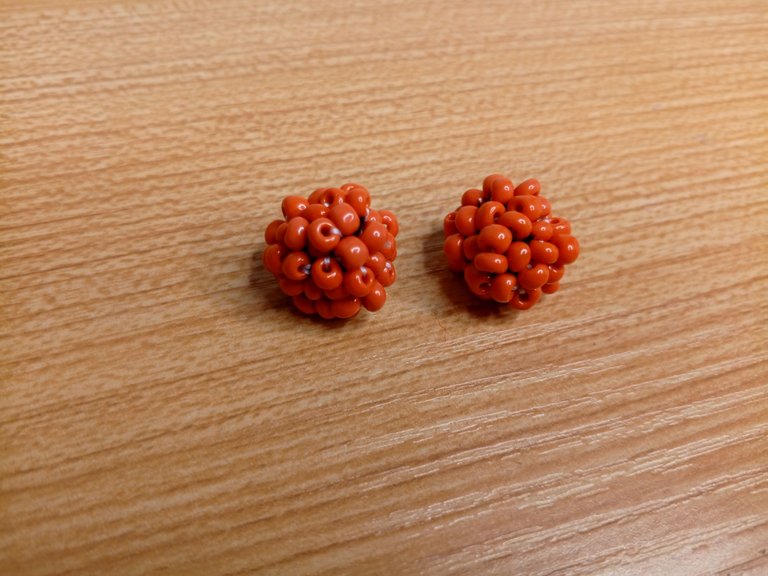
[Esp]
Para empezar, como os recomendé al principio, si puedes usar alambre delgado de bisutería te quedará mejor, yo solo me ingenié con lo que tenía reciclando.
Se trata de forrar cada borla con las mostacillas en este caso de color naranja, cuando cubras todos los espacios de la borla, continúas con la siguiente.
Las fui cociendo a mano una a una, atravesando la borla.
! [English version]
To begin with, as I recommended at the beginning, if you can use thin wire from costume jewelry it will be better, I just managed with what I had recycling.
It's about lining each tassel with the beads, in this case orange, when you cover all the spaces of the tassel, continue with the next one.
I hand sewed them one by one, going through the tassel.

Step 2️⃣/ paso 2️⃣

 | 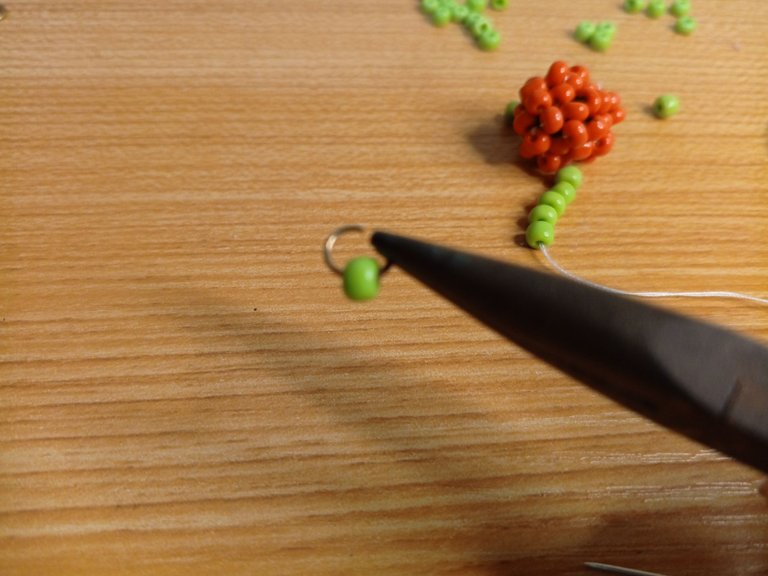 | |
 | 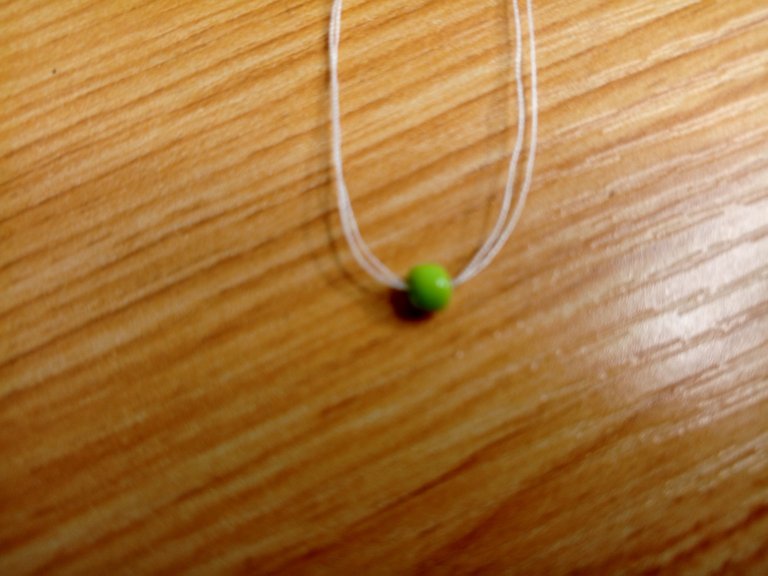 |
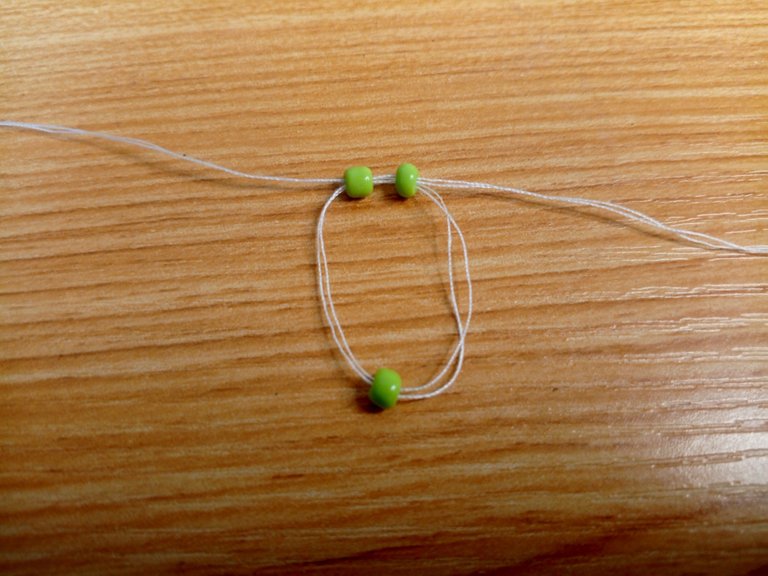
[Esp]
Cose la ramita a la fruta, son unas naranjas, colocas una hilera de 5 mostacillas.
Introduce una mostacilla en un aro luego lo atraviesas con el hilo, y lo fijas a la varita.
La hojita consiste en tejerla de la siguiente manera (usa la imagen como referencia: Comienza con una mostacilla, atraviesa con el hilo.
Introduce ahora dos mostacillas atravesando el hilo en cada una, aprieta un poco el hilo.
! [English version]
Sew the twig to the fruit, they are oranges, place a row of 5 beads.
Insert a bead in a ring, then thread the thread through it and attach it to the wand.
The leaf consists of weaving it as follows (use the image as a reference: Start with a bead, thread it through.
Now insert two beads through the thread in each one, tighten the thread a little.

Step 3️⃣/ paso 3️⃣

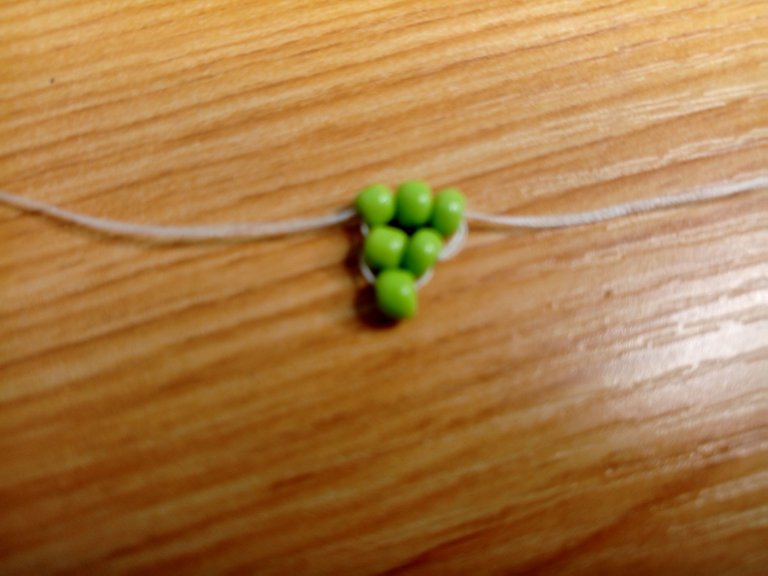 | 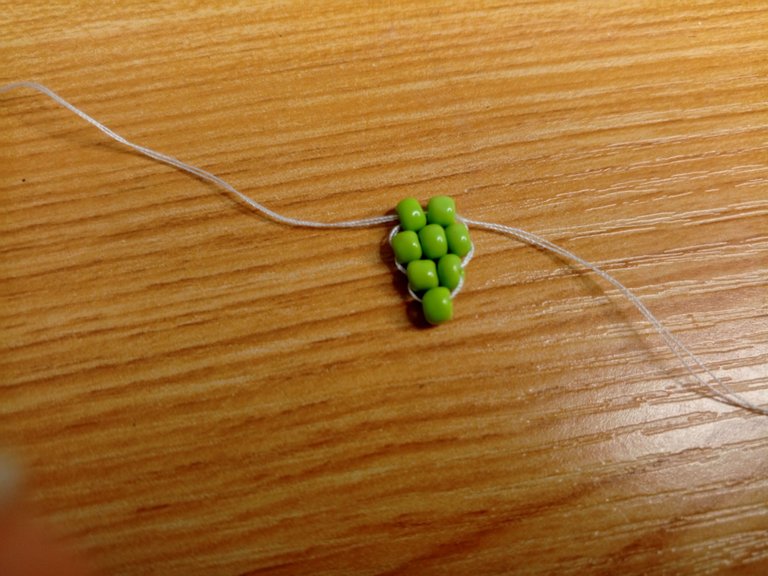 | |
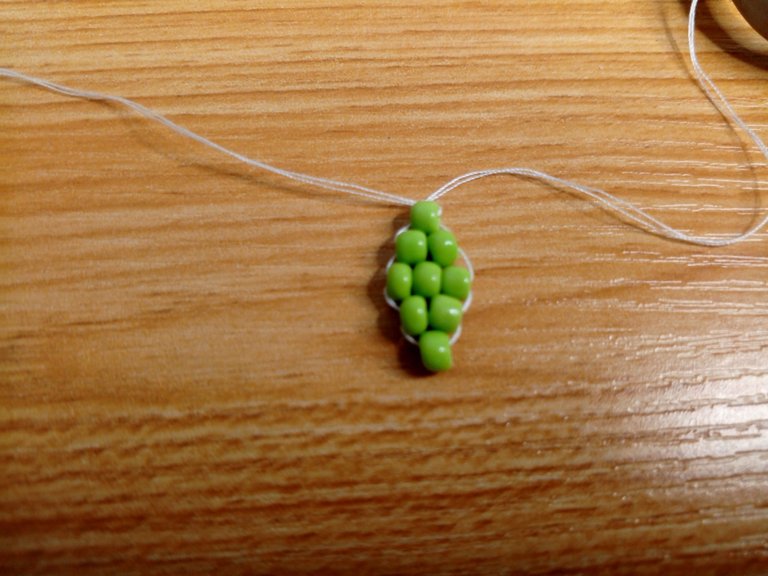 | 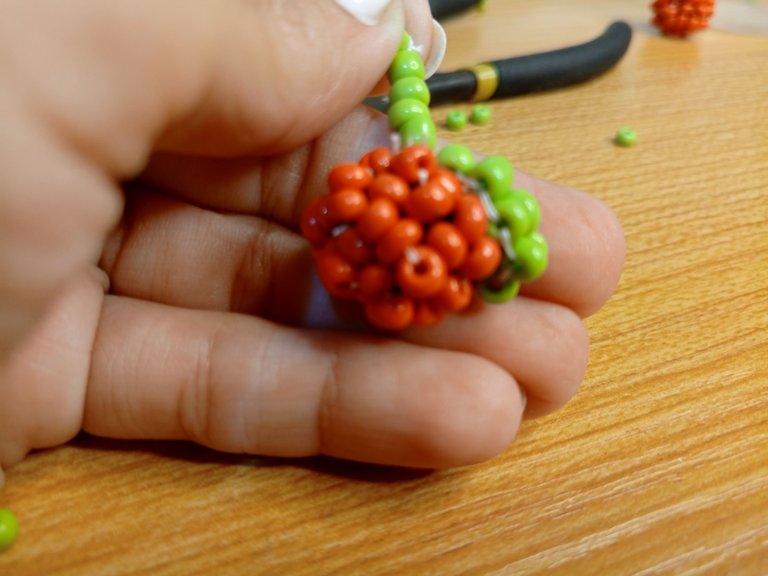 |
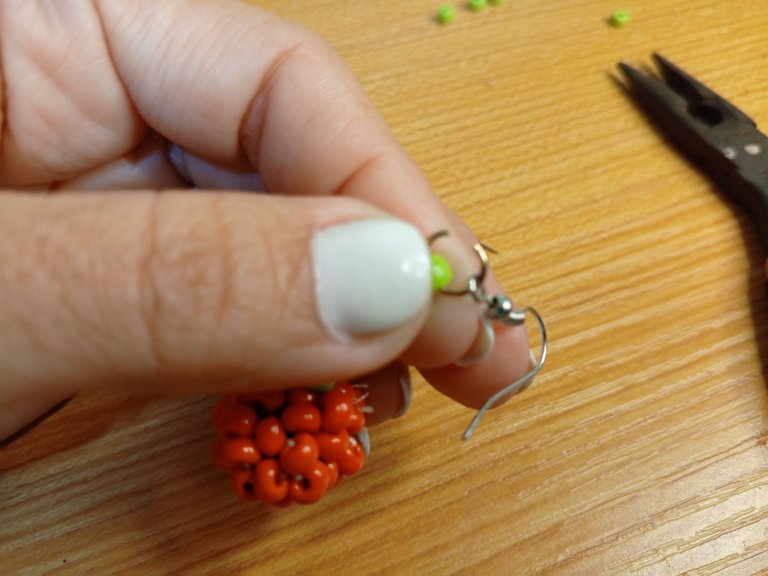
[Esp]
Ahora introduce tres mostacillas atravesando el hilo entre las tres.
Repetimos el paso anterior pero solo con dos mostacillas.
De la misma forma repitiendo los pasos anteriores introducimos una mostacilla, aseguramos con un nudo.
Esta hoja la fijamos a la bolita que hicimos (naranja).
Abre nuevamente el aro e introduce el gancho de metal para arete y luego lo cierras con ayuda de la pinza, con ello terminamos nuestro primer zarcillo.
! [English version]
Now insert three beads through the thread between the three beads.
Repeat the previous step but only with two beads.
In the same way repeating the previous steps we introduce a bead, we secure it with a knot.
We fix this leaf to the little ball we made (orange).
Open the ring again and introduce the metal earring hook and then close it with the help of the clamp, with this we finish our first tendril.

Step 4️⃣/ paso 4️⃣

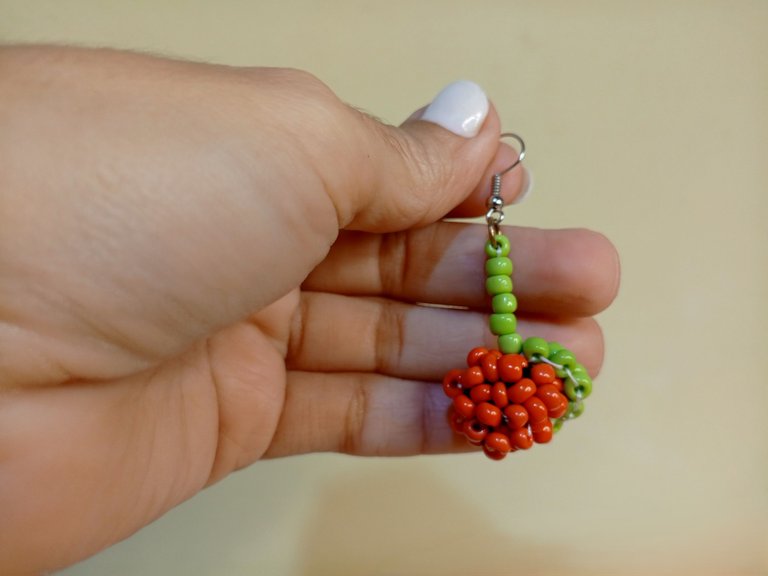
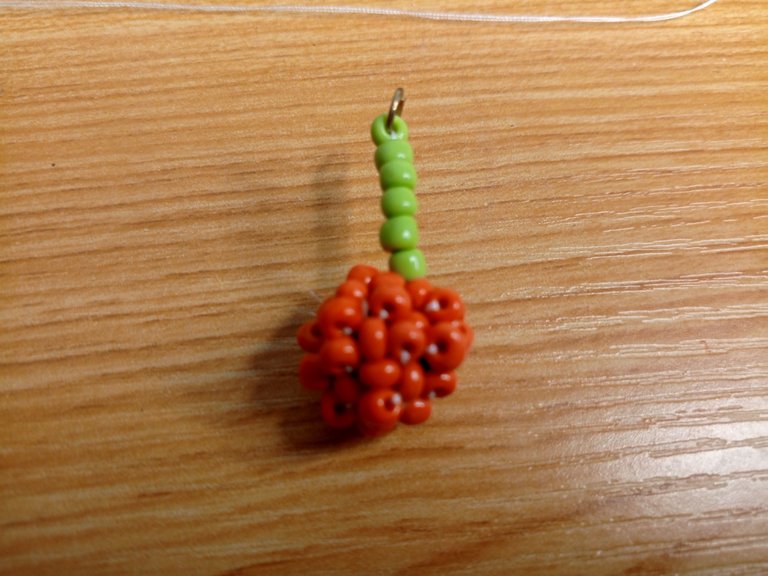 | 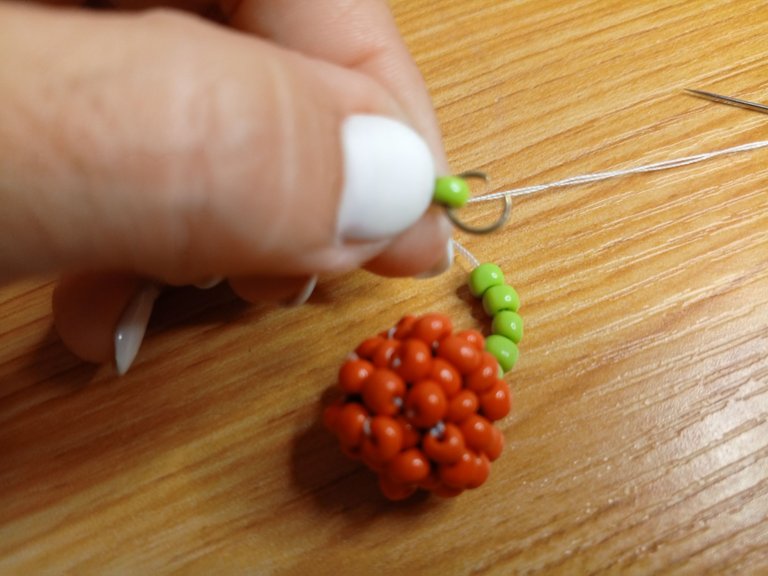 | 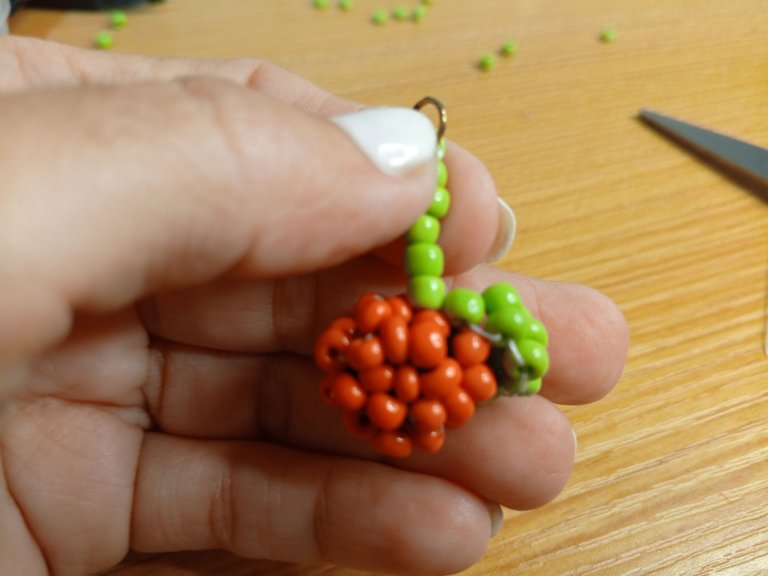 |
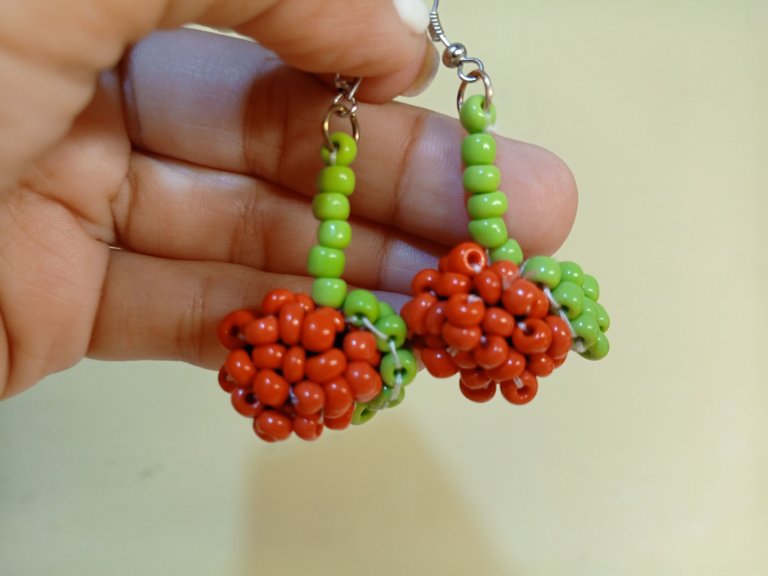
[Esp]
Repitiendo los pasos anteriores, coloca 5 mostacillas seguidas para hacer el palito de la fruta.
La sexta mostacilla la introduces en el aro de metal y luego atraviesa el hilo y la fijas al palito.
Repite los pasos anteriores para hacer la otra hoja.
Ahora cose y fija la hoja a la fruta (naranja)
Abre el aro e introduce el gancho de metal para arete y luego lo cierras con ayuda de la pinza, con ello terminamos nuestro segundo zarcillo.
Nos vemos en mi siguiente post.
! [English version]
Repeating the previous steps, place 5 beads in a row to make the fruit stick.
The sixth bead you insert into the metal ring and then thread it through the thread and attach it to the stick.
Repeat the above steps to make the other leaf.
Now sew and attach the leaf to the fruit (orange).
Open the hoop and insert the metal earring hook and then close it with the help of the clamp, this is the end of our second tendril.
See you in my next post.


Créditos / Credits


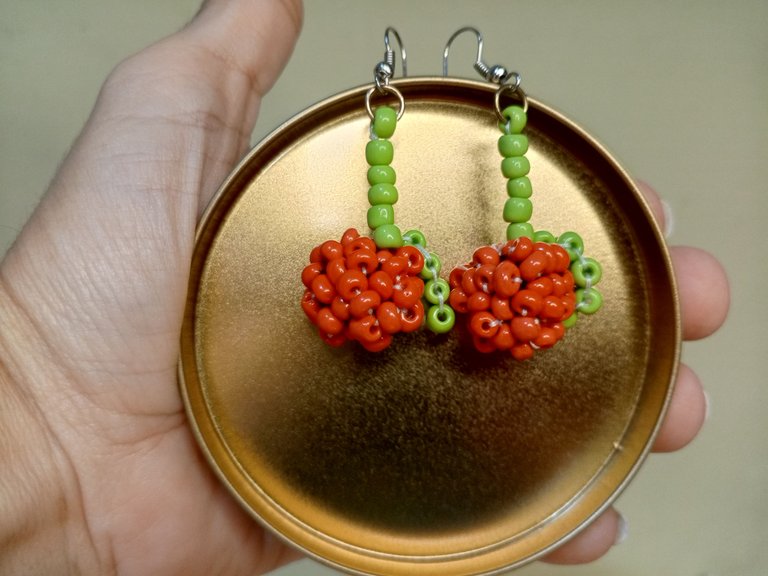


💜💜💜


![]() 👉
👉  👉
👉  👉
👉  👉
👉 
Here / Bríndame un café


